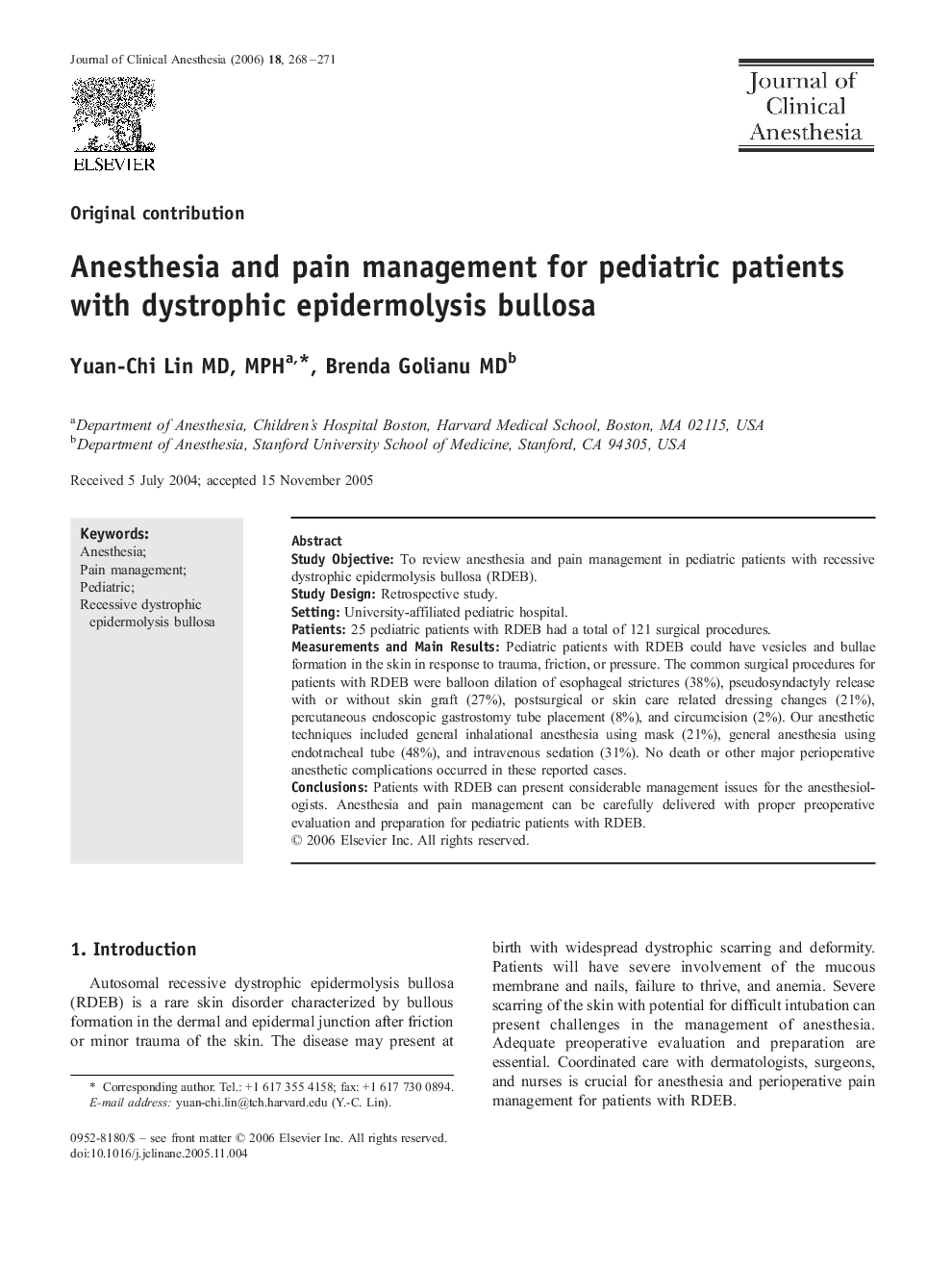| Article ID | Journal | Published Year | Pages | File Type |
|---|---|---|---|---|
| 2763870 | Journal of Clinical Anesthesia | 2006 | 4 Pages |
Study ObjectiveTo review anesthesia and pain management in pediatric patients with recessive dystrophic epidermolysis bullosa (RDEB).Study DesignRetrospective study.SettingUniversity-affiliated pediatric hospital.Patients25 pediatric patients with RDEB had a total of 121 surgical procedures.Measurements and Main ResultsPediatric patients with RDEB could have vesicles and bullae formation in the skin in response to trauma, friction, or pressure. The common surgical procedures for patients with RDEB were balloon dilation of esophageal strictures (38%), pseudosyndactyly release with or without skin graft (27%), postsurgical or skin care related dressing changes (21%), percutaneous endoscopic gastrostomy tube placement (8%), and circumcision (2%). Our anesthetic techniques included general inhalational anesthesia using mask (21%), general anesthesia using endotracheal tube (48%), and intravenous sedation (31%). No death or other major perioperative anesthetic complications occurred in these reported cases.ConclusionsPatients with RDEB can present considerable management issues for the anesthesiologists. Anesthesia and pain management can be carefully delivered with proper preoperative evaluation and preparation for pediatric patients with RDEB.
